Part 1 of 4 video interviews with SF Giants – Social Media Director – Bryan Srabian
What started out as a “planned” 15 minute interview last week with Bryan Srabian ended up turning into a information packed 60 minute conversation about social media strategy, campaigns, monetization and what it takes to break into the sports industry.
So great in fact that I’ve decided to break down the interview into 4 parts so that you can take in all the valuable information that Bryan has to offer (without feeling like your head is going to explode!). 🙂
Social Media Strategy – Key Takeaways
In this first video interview, we talk about his role with the San Francisco Giants and how the Giants are using social media to connect with their fan base. Here are just a few of the things we discussed:
- Bryan’s unique path into his current role as the SF Giants Social Media Director
- His personal “WOW” moment that has impacted the Giants current social media strategy
- The secret behind the Giants success in being named the #1 Socially Engaged Team On Facebook during the 2012 MLB Preseason
- The unique relationship with MLBAM and how decisions are made when implementing new technologies into their social media strategy
- How the SF Giants are using Pinterest and Tumblr to connect with niche markets
Trevor Turnbull: Hey everyone it’s Trevor Turnbull here with Sports Networker and I’m Joined on the line today by Bryan Srabian from the San Francisco Giants. How’s it going Bryan?
Trevor I’m doing great. It’s baseball season, couldn’t be happier.
You gotta love it. You guys are starting tonight I understand?
Yeah. The team is actually in Arizona. It’s a 4 o’clock game here on the west coast and I’m focused. We’ve got people on the scene, I dont travel with the team often, every once in a while I do. I’ve got four screens up – we’re live on many different networks, we’re drumming up some excitement so it’s an exciting time.
Our home opener is next Friday in San Francisco.
Nice. So I guess you’re kind of speaking to the luxuries and the downfalls of your job right? You are connected all of the time as the director of social media for the team and you’re essentially able to do what you do remotely and in this case from your house right?
Yeah. The home office today is connected with a pretty fast broadband connection and I have several devices up and running. You don’t sleep a lot – before the game there’s a lot of excitement and you’re usually engaging with fans, during the game obviously and then after the game.
You’re right; it is somewhat of a double-edged sword I guess but that’s why I think it’s so important that if you really enjoy doing this it doesn’t really seem like a job and it’s part of what you enjoy doing. You dont mind watching baseball and engaging. We’ve got a number of other promotional things that are happening during the game and we’re kind of building up towards our home opener. The technology advancements, not just in mobile but just in networks, have given fans more access and the ability to do more than they ever have before and that gives us this really unique opportunity to engage with fans.
Yeah, no kidding. Like I mentioned before we hopped on this call I did my research and looked into yourself and the Giants and all of the stuff that you guys are doing and I’m really looking forward to chatting with you about this. I can honestly say from what I’ve found that the Giants are known as one of the most proactive teams as it relates to integrating new technologies and using them to reach out to the fans and you’re being recognized for that. That’s a testament to all of the work that you’ve done.
Let’s start out, first of all though, by backing it up a few years. I want to let people know a bit about who you are and how you came into this current role that you’re at. Can you give us a bit of your background about how you became the director of social media for the San Francisco Giants?
To me it’s kind of a relevant story because everyone always asks me, “how did you become the director of social media for the Giants?” and I say it started back in 1995 actually when I become an intern for the Giants in the media relations department.
I went to Santa Clara University; I know you’re up in Vancouver so the home of Steve Nash; we have that connection going for us. I actually did radio play-by-play back in the day – I had about 20 listeners. It was a lot of fun but the opportunity came up, Santa Clara is about 45 minutes south of San Francisco at Candlestick Park, and I had this great opportunity to work in the media relations department. I thought it was just kind of a one-time thing, it’d be fun to do and perhaps move on to something else. That turned into an entry level position with the Giants in ’96 in the corporate sponsorship department. Long story short I ended up spending 13 seasons there. Everything from the promotions team, worked in the entertainment department and I was the director of entertainment marketing for the Giants through 2008. I had a variety of different roles with the team. I was just one of those people that, I guess, if you work in the sports industry you can jump from team to team from location to location but I just love San Francisco, I love the Giants and I kept creating new opportunities for myself and the Giants were great about letting me kind of grow into different roles.
Then in 2008 I was married, we had a child and had another one on the way and we decided to move and be closer to family. I left the Giants and then in 2010 things kind of changed again. I was looking for a new opportunity and the Giants were looking to have someone run social media. It was almost serendipitous on my part because I felt like I had been training to be a social media director, or whatever you want to call it. At that time there wasn’t even a title; I didn’t really have a title for the first year. The Giants trusted me to kind of figure out what this role would be.
Year one it was kind of doing a lot of work with the Giants internally to figure out what our strategy was going to be. I worked very closely with Major League Baseball advanced media because we have a unique relationship in baseball and how they basically work together with us on all of our digital assets. The Web site, the app, at the time it was Facebook and Twitter only. I worked a lot to bridge that gap and figure out our strategy and focus on that.
Here we are now in season three as the director of social media and, as I said it was just Facebook and Twitter, now we’re up and running on Tumblr, we have a Pinterest account, we’re on Google+, the app now integrates FourSquare. There’s a lot going on in our world and obviously more and more of the Giants inner-departments are using social media for establishing their own goals, if you will.
Yeah. I’m definitely looking forward to diving into all of that that. There’s a whole bunch of keywords there where I want to throw questions at you.
Before we get there though I also want to bring up that I was watching a presentation you delivered. I believe it was in New York or Boston, the Hub spot. You were speaking to your own personal story about how social media has impacted you and that “wow” moment of connecting with somebody via Twitter. I’ll let you mention who that person was; I know I have a similar story I just want to let you tell that to everyone who’s watching here.
Alright. This was 2010 and like I said my first goal was to lay out the strategy for the Giants. How are we going to use Twitter, how are we going to use Facebook. We had a lot of different departments that were doing different things and we decided that we were just going to have one voice. There was going to be the Giants Twitter account and the Giants Facebook account and just kind of collapse everything.
Our media relations team was running the official Twitter account and they did a great job; they would post lineups, they would post updates on the team, transactions and obviously scoring updates. I wanted that to continue because obviously that’s first and foremost what’s important. Twitter provided a unique opportunity and I was noticing that some other brands outside of sports and people were using Twitter in unique ways. I was reading a lot of books and one book that I was reading at the time, it’s around here somewhere, is “Trust Agents” by Chris Brogan and Julien Smith. I was really just geeking out on all of this social media stuff.
So I’m on Twitter one night, it’s really late, and I follow Chris Brogan. I tweeted to him as I’m reading his book saying I’m really enjoying your book, something to that effect, and he tweeted me right back at that point. I literally jumped out of my chair. This guy, to me, was up on that pedestal of social media experts. There’s a lot of people that call themselves experts but he, in my opinion, was. We basically had a Twitter conversation and that just really struck me right there as we need to really engage with our fans.
That became my “a-ha” moment for the Giants and I said we’re going to establish our voice, we’re going to engage, we’re going to answer all of the at-replies that we can, we’re going to recognize fans that are going to talk about us. Much like putting them on the scoreboard at the games.
This is kind of what I was eluding to earlier; my job was entertaining fans in the ballpark, everything from kiss cam to dance cam to all of these fun events that we were doing on the scoreboard between innings. That the same experience I wanted to have with our social media.
Twitter really helped us grow. When I took over we had 3,000 fans on Twitter.
That was in 2010 you said?
January 2010 I think we had 3,300 fans on twitter. Which was great, it was a good start, but the 49ers and the Raiders were kind of kings of the Bay Area and they had like 30,000 at the time. Obviously everyone has grown since then but we really started to grow that season and, obviously, as the team went onto the playoffs that year and won the World Series things really grew but I feel like we set that foundation. That was really a big turning point for me in terms of understanding the power of Twitter.
Not every team does it that way and I’m not saying that’s the only way to do it but we have a pretty unique relationship with our fans and we’re pretty proud, especially with Twitter. I’m a huge fan of Twitter, our fans are really passionate and talk a lot on Twitter. That was one unique story that happened to me – I’ll share one a little bit later that happened that happened earlier this year.
I think that’s how I get inspired; not just looking at what other sports teams are doing but what other brands are doing, what other people are doing. We do Twitter chats and I get that because there are some cool people who do Twitter chats hashtag SBChat. There’s some unique Twitter chats and we did one with Giants fans.
In fact, as we speak now, our radio announcer Dave Flemming is doing his own Twitter chat and I kind of helped him set that up but he’s doing it on his own. I didn’t want the Giants brand to get in there yet because I didn’t want to flood him with a bunch of fans yet. Just looking at what people are doing it’s such a great marketing tool but it’s an even better communication tool.
Yeah. I think you’re speaking to the testament that the same rules apply. It doesn’t matter if it’s a brand or an individual or a bigger-than-life celebrity that you look up to and think there’s no way I’m ever going to be able to chat with this person. Your “wow” moment, I think, has definitely helped the team because you saw the impact as yourself how it felt to hear back from Chris Brogan. Imagine what these fans that have been following the team for years and years must feel like when they hear back from somebody that works for the team or a player even; it must be just thrilling for them. It’s a model to be duplicated for sure.
I’m looking at a graph here right now; I actually found some stats from the preseason that’s talking about the top 10 socially engaged teams on Facebook, talking about Facebook real quick here. You guys are ranking at the top of the list. There’s a whole bunch of metrics here that it’s based on – number of fans, trending, how many people are talking about you. Again, that’s another testament. You guys are currently at 1.3 million Facebook fans roughly and the three teams that have more are the Chicago Cubs, Boston Red Sox and New York Yankees; obviously all massive brands themselves too. Congratulations to you on that – it’s a great way to start the season right?
Yeah. Everything kind of has to be put in perspective. I’m not going to sit here and say everything that we’re doing is based on great strategy and unique things because we have this great advantage of being in San Francisco. It’s not New York, it’s not Boston, it’s not LA but it’s still a pretty big market. We did win a World Series and we do have a great cast of talented, unique characters on our team. I think all of that combined add to that success.
So you’re not taking all of the credit is what you’re trying to say?
Yeah and I’ll be the first one to tell you that.
That’s the other thing that always bothers me; a lot of these studies come out and they just look at the followers. If you’re lucky enough to be on a suggested user list early on you’re going to get a high follower number. Or if you’re the New York Yankees you’re going to get high followers because you’re the Yankees in New York. That’s great, you shouldn’t apologize for that, but it’s not fair to teams that are in smaller markets because there are some teams in Major League Baseball that are doing some great things. They just dont have the bandwidth or the exposure because they’re just in a smaller market. I think you’ve got to really dive in deep to look at those stats.
Facebook continually changes, we all know that. The thing that I’m really focused on right now is this “talking about” feature. I’m like obsessed with this right now; we are the most talked about team in Major League Baseball right now; the metric is like 115,000, whatever it is. That’s more than the Yankees, who have 5 million followers. I’m just saying that to me, in terms of a comparison, we are doing something right in engaging fans on Facebook. There’s some NFL teams, like the New York Giants, that are just killing it. Obviously they just won the Super Bowl and they’re really hot right now and the NFL is a big brand. I also look at European soccer teams and Manchester United, some of those teams, who has this ridiculous engagement rate with their fans.
I think the biggest part of that is understanding your Facebook fans. You cant look at Facebook the same way you look at Twitter; you have to understand who those fans are. Age, demographics, what do they like, when to post. We’re constantly fine-tuning that and I think we’re building off of the excitement of the start of the season and really focusing on building engagement. I think that’s been the biggest growth for me; understanding the analytics and trying to translate that into our strategy.
Yeah. Trying to make sense of it at all right?
Right.
See where the value is in a traditional sense of actually driving revenue. Which is another topic that we’ll hopefully get to in a little bit.
Speaking of all of this strategy and stuff too, you mentioned earlier that you guys have launched a Tumblr account and a Pinterest account. I saw that Major League Baseball has placed people in every Major League Baseball city to be able to follow and spread the word about the team.
How do those decisions get made? I know Major League Baseball is a little bit different with the advanced media group as opposed to the NHL where they get some direction from the NHL headquarters but they’re really kind of on their own to implement their own strategies and experiment with things. How does it work for you guys? Do you guys get the direction and then you implement or do you come up with these creative ideas and pitch them to Major League Baseball?
It’s kind of both. Like I said, we consider ourselves partners with Major League Baseball advanced media. I’m on the phone and emailing them constantly throughout the week, working on new ideas.
Pinterest and Tumblr were launched just recently, like in March. Google+ was launched earlier this year. Their strategy is to have all 30 teams on the same platforms at the same time and it’s got to make sense for everybody. I think, where someone like me wants to be on everything and that’s just my nature, it’s good because we work together and we have to figure out a strategy first which makes a lot of sense. We’ll figure out what our strategy is with them and together we’ll launch it and then we work on the execution. They really lean on us, the teams, to have creative ways to use those different platforms, to connect with our own fanbase and they come back to us and say, “check out what the Mariners are doing, I think you might like this.” Or something that we did they want the Boston Red Sox to try.
It’s within that kind of context that we work together and at the end of the day we all have the same goals. They’ve really done a great job, I think, of understanding the social space and allowing the Major League Baseball teams to utilize them.
Now I’m kind of like be careful what you wish for. I thought I was busy before, now it’s really busy. It’s great; I love the challenge, I love the opportunity and I think, again, each of these different platforms offer new opportunity for us.
MLB.com continues to advance with new innovations and I’m just excited about the future, this season in particular. It’s going to be fun.
Yeah. It’s great to hear that the teams actually share ideas and best practice. It’s obviously not hard to see what other teams are doing if you’re keeping an eye on it. If you kind of have a central point saying the Marlins tried this and they found success and this is the strategy they used you know that the competition is, of course on the field, to win but ultimately every team wants to be successful finically and in building the community around the team, everything to do with that. It’s great that they actually share these ideas with the common goal in mind of fans benefitting and keeping the team finically stable as well.
You started to talk a little bit about demographics too. Pinterest is obviously a hot-button topic right now; everybody is talking about Pinterest. Tumblr has been around for a while but I guess there definitely are some teams that are starting to proactively use it. We chatted earlier and I talked to Sean Parker from the Washington Capitals and they actually have somebody dedicated to their Tumblr account – it’s a person that’s in their media relations team, they’re on the road with the team, they’re providing a behind the scenes look at players delivering cupcakes to the media personalities, that kind of behind the scenes look that you don’t see anywhere else.
What’s your guys’ take, and I’ll let you speak to all of these niche markets because I watched another interview where you talked about having a Philippino night and a Chinese night and an Irish night and a Hispanic night at the park. What’s your approach to social media as it relates to tapping into all of these different demographics?
It’s probably the one question that is keeping me up at night. You just cant post the same thing on your Facebook, on your Twitter, on your Tumblr. I think that’s where we’re trying to figure out what fans of ours are on Google+ right now and what’s the best way to use that. It’s always moving and it’s always changing.
To get back to an earlier statement, yeah I have contacted other teams. To me that’s one of the coolest things about working in sports; obviously we want our teams to win and we’re competitive by nature but I can pick up the phone and talk to any number of my colleagues. Even if I dont know them, per say, after that quick introduction it’s like before you know it we’re best friends in terms of “I would love to share this with you, come to our ballpark anytime.” Something that might work for one team might not necessarily work for another but we’re always being honest with each other about what works and what doesn’t.
In terms of that yeah. To give you an example we have an in-house production team, SMG Productions. They make fantastic videos – they make 30-minute TV shows that show up on our rights holders. They do short Web casts, we do live streams, do a number of different things. They’re also taking tons of still photos and they’re sending me a lot of photos. Our photographer sends me a lot of photos. I’m taking photos. We’ll have all of this content and it’s up to me to decide how and where to present it.
I look at Tumblr and it seems like a pretty young, hip group to be on. I want that to have a specific look and feel to it. Not so much behind-the-scenes but more of an artistic flavor. Something with a kind of, as the kids say, some swag.
Let me tell you something, I’m feeling really old at times. I saw you guys release the 30 under 30 and I’m like, “man, I gotta get out of this game. I’m just getting old.”
I feel your pain Bryan. I had the exact same thought when I saw that one.
But then hanging out in all of these networks I kind of pick up some slang and I look at it and I’m like OK.
That’s the other cool thing; not only do we have formal surveys but we also have conversations and I’m picking the fans’ brains. They’re offering up their ideas of what they think it should be.
I think it’s constant – having that communication and engagement and having an understanding of those different networks.
Pinterest is a whole new game. I’ve spent more time kind of studying it than actually pinning. The stats right now are 80% female, OK. So I’ve dubbed my wife as my Pinterest consultant, I’m like “what do you think?”
What better expert right? It’s the demographic.
Absolutely. She’s the CEO of the house anyway.
There you go.
It’s understanding and it’s talking to a lot of fans. I think that’s one thing I haven’t really accomplished; what exactly we’re going to do. I have an idea and I think as the season goes on we’ll continue to grow in that area. It’s going to be a little different and obviously what fans repin will kind of dictate that.
It’s first understanding who that audience is. It’s understanding what they’re looking for and looking at those analytics. That’s why it’s so important to measure everything in terms of your social media and you can. That part of the analytics and the reporting takes a lot of time but it’s the most important part of any kind of social media strategy.
Yeah. I think that’s why you see that teams are finding success in whatever form that might be. On Facebook and Twitter, you spoke to it, it’s been around a while right? You have some feedback, you have some analytics to analyze. Pinterest and all of these newer tools, it just has to take some time. You have to let people tell you what they actually want to see on there right? You can come up with the best strategy in the world and launch it and nobody will care.
To me the most important thing is you have someone dedicated to it. It sounds simple but a lot of teams are still in the “figuring out” stage of whose going to run this, is it marketing, is it communications. Once you have someone focused on your social networks – I feel thankful that I’m able to do this and spend all of my time focused just on social media where other teams are splitting duties amongst things. It takes a lot of time to understand and to get this. There really are no short cuts. That’s really, I think the biggest challenge for us is to figure all of this out; it just moves and changes so quickly.
Especially Facebook. Once you figure it all out it’s like, “OK. Now we’re in Timeline.” So let’s figure that out now. I like that too. That keeps you always looking for new ways to improve and not get complacent with your strategy and always looking for ways that you can continue to connect with your fans and get smarter. It’s also a challenge for someone like me and all of us in this space and I think we thrive off of that too.
Yeah it really gives you an opportunities to be creative and not just go through the motions of this is Facebook. They make a massive change like they did and now all of the sudden you can do something unique that will make you stand out above the crowd and become that best practice example.
Check out Part 2 in this video interview series where we talk with Bryan about some of the unique Social Media Campaigns the SF Giants have launched in the past year.
How do you think the SF Giants compare to other MLB teams when it comes to their use of social media? What are they doing great? What do you think they could be doing better? Leave your comments below and/or send us a tweet to @sportsnetworker


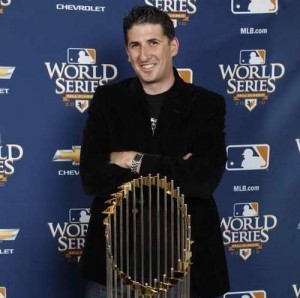

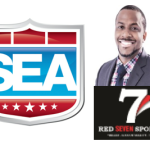
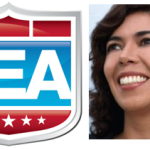
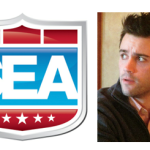
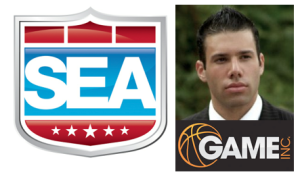
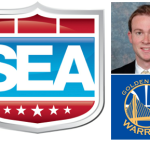
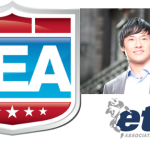
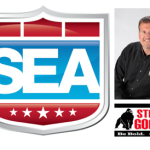
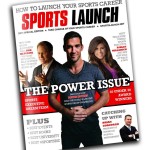
Another great interview @trevorturnbull you’re great at this mate. Can’t wait for part 2. Cheers.
Fine way of describing, and pleasant article to get facts regarding my presentation focus, which i am going to deliver in school.